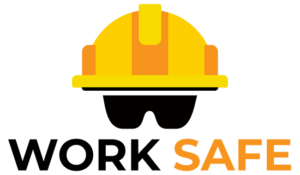In the dynamic landscape of workplaces, the ethical implementation of safety measures is not just a regulatory requirement but a fundamental commitment to the well-being of every individual within an organization. At the heart of work safety lies a set of principles that transcends legal obligations, encapsulating a culture where every employee feels valued, protected, and empowered.
1. Employee Well-being as a Priority: Ethical work safety implementation places the health and well-being of employees at the forefront. It goes beyond compliance checkboxes, recognizing that each worker is not merely a resource but a vital contributor to the organization’s success. Prioritizing safety ensures that employees can perform their tasks with confidence, fostering a positive work environment.
2. Transparency and Communication: An ethical approach to work safety involves open communication at all levels. Transparent sharing of safety protocols, potential risks, and ongoing training initiatives builds trust among employees. This transparency instills a sense of responsibility and shared commitment to the safety of the entire team.
3. Continuous Training and Development: Implementing safety measures ethically means investing in continuous training and development programs. Providing employees with the tools and knowledge to navigate potential hazards not only ensures their safety but also fosters a culture of learning and improvement.
4. Fair and Just Reporting Systems: Ethics in work safety is reflected in fair and just reporting systems. Employees must feel confident in reporting unsafe conditions or incidents without fear of reprisal. A culture of accountability, where everyone is encouraged to speak up, is the cornerstone of ethical safety implementation.
5. Environmental Stewardship: Work safety extends beyond individual well-being to include the broader environment. Ethical safety practices consider the impact of operations on the environment and strive to minimize any negative effects. Sustainable and eco-friendly practices contribute to a socially responsible workplace.
6. Empowering Leadership: Leadership sets the tone for ethical work safety implementation. When leaders prioritize and model safety-conscious behaviors, it sends a powerful message throughout the organization. Ethical leadership fosters a culture where safety is not just a set of rules but a shared value.
7. Community Engagement: An ethical approach to work safety extends beyond the workplace and engages with the broader community. Organizations committed to ethical safety practices actively participate in community initiatives, sharing knowledge and resources to promote safety awareness on a larger scale.
To conclude, work safety is not just a regulatory requirement; it’s an ethical imperative. Organizations that prioritize the well-being of their employees through transparent communication, continuous training, fair reporting systems, environmental stewardship, empowering leadership, and community engagement not only meet legal obligations but create thriving workplaces built on a foundation of ethics and care. Upholding these values ensures that safety is not just a policy but a shared commitment that resonates throughout the organization.



Comments are closed